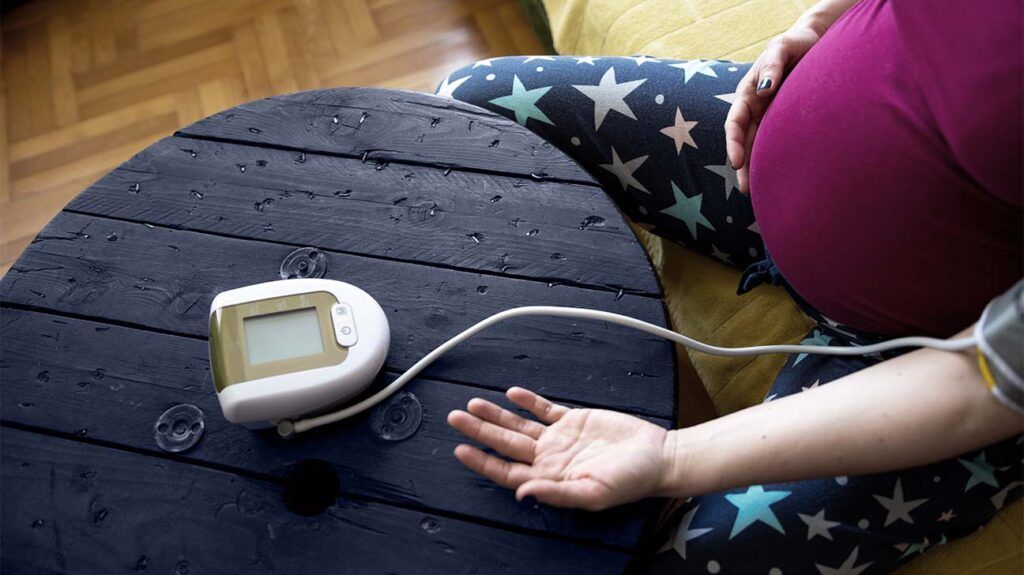Preeclampsia and eclampsia are high blood pressure disorders that occur during pregnancy. They can affect the fetus and pregnant person and require urgent diagnosis and treatment.
Individuals with preeclampsia often have protein in their urine and may have swelling of the limbs or face. When preeclampsia becomes severe, it can lead to eclampsia.
When a person has eclampsia, they may experience seizures and have an increased risk of stroke during pregnancy and after delivery.
Understanding the differences between preeclampsia and eclampsia can help a pregnant person protect their health. This article explores the two conditions and their symptoms.

Preeclampsia and eclampsia are medical conditions that can occur during pregnancy. They pose serious health risks to the pregnant person and the fetus.
A hallmark feature of preeclampsia is high blood pressure (hypertension). This increase often occurs suddenly and is persistent, which means it is ongoing. Over time, it can damage vital organs, particularly the liver and kidneys.
According to the
However, it can also occur between 48 hours and 6 weeks after delivery.
When preeclampsia is severe enough to affect brain function, doctors call it eclampsia. A person with eclampsia may experience seizures, and it can have severe consequences for the pregnant individual and the fetus.
It can occur during pregnancy, labor, or
Learn more about .
The
Other symptoms include:
- abdominal pain
- nausea
- vomiting
- shortness of breath
- increased swelling of hands, feet, and face
Doctors should consider possible preeclampsia in pregnant people with a systolic blood pressure of 140 millimeters of mercury (mm Hg) or above or a diastolic pressure of 90 mmHg or more.
If preeclampsia becomes eclampsia, the hallmark symptom is generalized tonic-clonic seizures. People may have headaches, visual changes, abdominal pain, and increased blood pressure before a seizure begins.
Learn about preeclampsia with severe features.
During a typical pregnancy, certain cells from the developing baby
However, in preeclampsia, the cells from the baby do not work as they should. This means that the blood vessels in the uterus remain misshapen, leading to reduced blood flow to the placenta. Reduced blood flow causes resistance in the blood vessels, making them narrower.
This, in turn, results in a lack of blood supply to the placenta, which is harmful to both the parent and baby.
Because of the reduced blood flow, harmful substances such as free radicals and specific proteins can build up. They can damage the blood vessels and make the lining of the blood vessels, or endothelium, unhealthy.
When the damage occurs in the brain’s blood vessels, it can lead to problems such as seizures.
Preeclampsia can also lead to eclampsia by causing high blood pressure, which affects the blood vessels in the brain. This can cause poor blood flow and damage to the brain’s blood vessels, leading to edema, or swelling.
Learn about other conditions that can affect the placenta during pregnancy.
The outlook for preeclampsia largely depends on the severity of the condition and how well a person manages it. Most people with preeclampsia deliver safely and fully recover.
However, some experience complications, some of which can be life threatening to the parent or baby. Therefore, doctors carefully monitor the person’s blood pressure and overall health during this period to ensure recovery.
Eclampsia can lead to complications, such as respiratory failure and pulmonary edema, which is excessive fluid in the lungs.
Some people develop neurological issues called posterior reversible encephalopathy syndrome (PRES). PRES typically resolves within a few weeks as long as a person’s blood pressure is stable.
People with preeclampsia and eclampsia also have an increased risk of developing heart disease later in life.
Learn about the links between preeclampsia and high blood pressure.
Any pregnant person experiencing symptoms of preeclampsia should contact their doctor immediately. The condition can progress rapidly, so early diagnosis and intervention are essential to prevent complications.
Regular prenatal check-ups and open communication with the healthcare team are vital to effectively monitor and manage the condition.
Preeclampsia is a pregnancy-related disorder characterized by high blood pressure and protein in the urine. Eclampsia is a severe form of preeclampsia that can involve seizures or coma.
Early diagnosis and appropriate medical care are crucial to prevent complications from these potentially serious issues.
Recognizing the typical symptoms, such as headache and swelling of the limbs, and seeking immediate medical attention are key.
